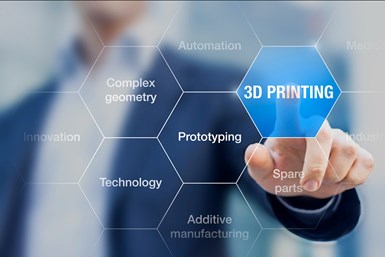Essentium Adding Metal Additive Manufacturing Capabilities for Industrial-Scale Production
Essentium is developing AM technology to enable metal parts production at a new level of speed, scale and economics.
Share

The aim of the new system is to enable metal parts production at a new level of speed, scale and economics. Photo Credit: Getty Images
Essentium, a provider of industrial additive manufacturing (AM) solutions, is collaborating with Atlantic Coastal Acquisition Corp. to develop a new metal AM platform that will be integrated with Essentium’s High Speed Extrusion (HSE) technology for industrial-scale production. The aim is for the system to help manufacturers change how they produce high-quality metal parts with new metal materials to unlock increased speed and economic and innovation advantages.
This latest effort is being led by the EssentiumX team, the future-focused special project development team at Essentium. Designed to disrupt current metal AM approaches, the advanced platform is being developed to push the boundaries of what is possible, the company says.
The technology, which is supported by five patents to date with three additional patents pending, is expected to provide energy-efficient deposition, decrease porosity and minimize warpage during a build. According to the company, it will produce parts comparable to castings and forgings with minimal postprocessing required.
“By leveraging our materials-first heritage, we are creating a unique manufacturing method,” says Elisa Teipel, Ph.D., chief development officer of Essentium. “Our metal AM platform will deliver improved throughput for high part quality, and it will have the potential for broad-scale use in major industrial markets, including automotive, aerospace and defense. We expect our metal AM platform to empower manufacturers to innovate faster and stay ahead despite unprecedented challenges in today’s markets.”
Related Content
-
At General Atomics, Do Unmanned Aerial Systems Reveal the Future of Aircraft Manufacturing?
The maker of the Predator and SkyGuardian remote aircraft can implement additive manufacturing more rapidly and widely than the makers of other types of planes. The role of 3D printing in current and future UAS components hints at how far AM can go to save cost and time in aircraft production and design.
-
Video: 5" Diameter Navy Artillery Rounds Made Through Robot Directed Energy Deposition (DED) Instead of Forging
Big Metal Additive conceives additive manufacturing production factory making hundreds of Navy projectile housings per day.
-
Beehive Industries Is Going Big on Small-Scale Engines Made Through Additive Manufacturing
Backed by decades of experience in both aviation and additive, the company is now laser-focused on a single goal: developing, proving and scaling production of engines providing 5,000 lbs of thrust or less.











